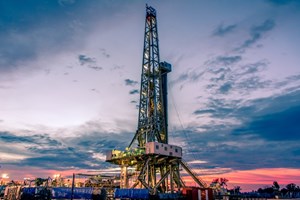URTeC 2022: Operators look for new ways to increase output from existing shale wells
(WO) — In an effort that has been underway for several years and is now set against a backdrop of triple-digit oil prices, oil and gas companies are continuing attempts to devise new methods of increasing production from existing unconventional wells. It is an effort toward which increasing sums of funding and personnel are being directed.
Accordingly, this was the topic for a Wednesday morning URTeC panel discussion entitled, “Leveraging Technology to Maximize Reservoir Recovery in Maturing Unconventional Plays.” Participants included Kaveh Ahmadi, EOR-RE Advisor for Bakken Technology at HESS Corporation; Dr. Birol Dindoruk, the AADE Endowed Professor for Petroleum Engineering & Chemical and Biomolecular Engineering at University of Houston; Ms. Faye Liu, President and Founder of Revochem; and Dr. Geoffrey Thyne, Principal, ESal-Engineered Salinity.
Efforts by HESS. As the sole operator representative on the panel, Ahmadi detailed his firm’s efforts to devise effective EOR in its principal area of U.S. onshore operations, the Williston basin of North Dakota. Ahmadi said that the HESS line of thinking is that “EOR in unconventionals must be feasible, economic and scalable. Our ultimate goal is to compete with new wells.”
Ahmadi said that one of the schemes his company has been examining for the Williston is gas-injection EOR. And there are a number of parameters to look at in designing such a scheme. These include the Subsurface—having an understanding of fluid and flow behavior; Lab tests—one of the problems is that lab-to-field translation doesn’t exist; Completion—this includes flow control and uniform distribution of injected fluid; Facility—having a modular mobile facility is important; and Gas—what are the actual price and return volumes of the gas used for injection?
In another angle to gas injection EOR, Ahmadi said HESS is looking at injecting foam as part of the process. “We will have Project Spiro in the Williston basin,” said Ahmadi. “It will be a huff-n-puff project with mobility control that utilizes foam-assisted gas injection.” He said the company has this project scheduled for Q4 2022 deployment.
Fundamentals and recovery mechanisms. For his part, U. of H’s Dr. Dindoruk discussed an overview of EOR fundamentals and recovery mechanisms. Among Subsurface Mechanisms and Surveillance factors, he noted initial compositions, as in CGR (condensate-to-gas ratio) and GOR (gas-to-oil ratio); Initial Flood Compositions, including areal and vertical variations; Sampling; Contamination; and Pore Proximity.
He also said that the single-biggest factor in effectiveness of gas injection EOR is “what happens in the matrix.” Dindoruk also made note of the growing trend of gas injection EOR discussion at conferences. “At the Tulsa 2022 IOR conference (SPE’s Improved Oil Recovery Conference in Tulsa, Okla., April 25-29), out of 106 manuscripts, 16 were related directly to unconventionals. And of those 16 papers, 10 were gas injection-related.”
Chemical fingerprinting. Revochem’s May Liu mentioned the role that chemical fingerprinting (a collection of techniques that trace a sample’s origin, based on its chemical composition) could play in devising EOR schemes for unconventional plays. Her firm specializes in high-resolution, high-fidelity chemical fingerprinting for a variety of purposes, including geological samples and petroleum products.
Indeed, in a related angle, Ms. Liu is an author in a paper presented at this year’s URTeC on “Reservoir Characterization and Monitoring Using Geochemical Fingerprinting Technology with Case Studies in the Delaware Basin.” In that paper, it is noted that “the methodology and workflow illustrated in this work provide quantitative, actionable information related to reserves and reservoir characterization, as well as reservoir performance, to enable optimization of the economic development of shale reservoirs.”
Water salinity. Engineered Salinity’s Dr. Thyne spoke about water salinity issues affecting efforts to maximize reservoir recovery in maturing unconventional plays. Thyne is an expert in increasing recovery by manipulation of water chemistry. After over a decade of research, he discovered that low salinity wasn’t always the answer to increasing oil recovery. Rather, he found that changing the salinity of injection fluid can change reservoir wettability.
Derived from Thyne’s research, his company’s ESal process is said to improve reservoir wettability and recovery by optimizing injection water salinity to increase recovery without the aid of chemicals. This is done by blending produced water with surface or other groundwater in EOR projects without adding chemicals. It is an angle worth exploring in various shale plays across the U.S.
In the Q&A portion of the panel, one audience member asked the group what their various opinions were on what percentage range of incremental recovery could be expected from EOR in unconventionals. HESS’ Ahmadi responded that “it depends on how your gas is set up. We don’t have a clear number in mind.” But U. of H’s Dr. Dindoruk said that he thought “15% to 20% is reasonable. But again, it depends on the matrix.”



